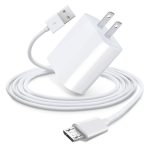Types of 12V Battery Chargers
When dealing with 12v battery charger, knowing the types available is crucial. Each type suits different needs and applications.

Smart Chargers
Smart chargers are advanced 12v battery chargers. They adjust the charge flow based on the battery’s condition. This prevents overcharging. Smart chargers work well for maintaining battery health. They often come with digital displays. These displays show charging stages and battery status. Most have safety features like overheat protection. Smart chargers usually cut off when the battery is full.
Trickle Chargers
Trickle chargers deliver a slow, steady charge. They are ideal for keeping batteries topped off. Trickle chargers are great for vehicles stored for long periods. They ensure the battery stays charged without risk of overcharging. A trickle charger is simple but effective for maintaining a charge.
Solar Chargers
Solar chargers use the sun’s power to charge 12v batteries. They are eco-friendly and cost-effective over time. Solar chargers work best in sunny locations. They are portable and easy to use. However, their charging rate depends on sunlight intensity. They are good for outdoor activities like camping. Solar chargers come with panels. These panels convert sunlight into electrical energy for charging.
Important Features of 12V Battery Chargers
When looking for a 12v battery charger, several features stand out as essential for effective and safe charging. These features not only enhance the charging process but also extend the life of your 12v batteries.
Adjustable Charge Rates
Adjustable charge rates are key for a variety of battery needs. Chargers with this feature can tailor the charging output to the battery’s requirements. For motorcycles or lawn equipment, a lower rate might be enough. For larger vehicles, a higher rate ensures a quick and full charge.
Multi-Stage Charging
Multi-stage charging is crucial for battery longevity. It includes different phases like bulk, absorption, and float charge. This process ensures a thorough charge without damaging the battery. Multi-stage chargers are intelligent, adjusting their charging pattern based on the battery’s status.
Safety Features
Safety is paramount when charging batteries. Good chargers come with built-in protections. Look for overcharge prevention, short-circuit protection, and temperature control. These features help prevent accidents and battery damage, ensuring peace of mind while charging.
Choosing the Right 12V Battery Charger
Choosing the right 12V battery charger is essential for efficient and safe charging. The charger you select must match your specific needs and the particular types of batteries you intend to charge. Two primary considerations in this decision are compatibility with the battery type and the size and portability of the charger.
Compatibility with Battery Type
To ensure optimal charging, the charger must be compatible with your battery. Whether you’re charging a lead-acid car battery, a lithium-ion marine battery, or an AGM motorcycle battery, the right 12V charger is crucial. Check your battery’s specifications before buying a charger. It should match the voltage and chemistry requirements. Using the wrong type can damage your battery or result in poor performance.

Charger Size and Portability
Consider where and how you’ll use your 12V battery charger. A compact, lightweight charger is great for on-the-go use. It’s perfect for road trips or outdoor adventures. If you plan to charge at a fixed location, size may be less of a concern. Large chargers often have more features like higher charge rates or advanced diagnostics. Always balance your size and portability needs with the features you require for effective charging.
How to Use a 12V Battery Charger
Using a 12v battery charger can be straightforward if you follow these steps.
Preparing Your Battery for Charging
Ensure the battery is clean and free from dirt or corrosion before charging. Check the terminals as well, making sure they are tight and not damaged. Remove any covers from the battery cells if applicable. Verify the battery type and voltage matches your charger. Safety first; always wear protective gear like gloves and eye protection.
Connecting the Charger
First, plug in your charger, but don’t turn it on yet. Connect the positive clip (often red) to the positive battery terminal, marked with a plus. Next, connect the negative clip (often black) to the negative terminal, marked with a minus. Ensure the connections are secure. Now you can turn on the charger, following the manufacturer’s instructions.
Monitoring the Charging Process
Keep an eye on the charging progress using the display on your smart charger. It will show stages such as bulk, absorption, or float. Avoid touching the charger or battery during this time and check for overheating. Once the battery is fully charged, turn off the charger. First, remove the charger’s plug from the outlet. Then disconnect the negative clip, followed by the positive. Check the battery’s voltage with a multimeter to ensure it’s fully charged.
Remember to maintain a dedicated focus throughout the charging process. This ensures both the safety and the longevity of your 12v battery charger. With these steps, you’ll maximize charging efficiency every time.
Maintaining Your 12V Battery Charger
To keep your 12v battery charger in top shape, follow these maintenance tips.
Regular Cleaning
Dust and debris can hinder your charger’s performance. Wipe it down regularly with a soft, dry cloth. Avoid using water or harsh chemicals. Ensure the plugs and connectors are free from dirt. This prevents poor connections and maintains efficiency.
Firmware Updates
For smart chargers, firmware updates are essential. They enhance functionality and fix bugs. Check the manufacturer’s website for updates. Follow their instructions to install them. Updating your charger’s firmware ensures you have the latest features and optimizations.

Proper Storage
Store your charger in a dry, cool place. Avoid extreme temperatures, as they can damage the charger. Keep it away from direct sunlight and moisture. Ensure the storage space is clean to prevent dust accumulation. Proper storage extends the life of your charger.
Troubleshooting Common Issues
When using a 12v battery charger, you might encounter some common problems. It’s important to address these quickly to ensure optimal performance and a long-lasting battery.
Overheating Problems
Overheating can occur during the charging process. To prevent it, use chargers with temperature control features. Don’t cover the charger while in use, as this can trap heat. Ensure there’s good airflow around the charger and battery. If overheating happens, unplug the charger, let it cool, and then resume charging at a lower rate if possible.
Charging Interruptions
Interruptions in charging might be caused by loose connections or power outages. Check the cables and connections first. Make sure they are secure and not damaged. Use a reliable power source. If you face frequent outages, consider a charger with a backup battery. Some advanced chargers resume charging from where they stopped after power is restored.
Battery Not Holding a Charge
If the battery won’t hold a charge, it might be old or damaged. Check the battery itself for any signs of wear or damage. Perform a voltage test to see if it’s within the normal range. If the battery is fine, the charger might not be compatible, or it’s not charging to the correct voltage. Double-check the compatibility and settings of your charger. If these steps don’t help, it may be time for a new battery or charger.
Innovations in 12V Battery Charging Technology
As technology advances, so do the methods and devices we use to charge batteries. Two notable breakthroughs in 12V battery charging have transformed the industry, making charging more convenient and efficient.
Wireless Charging
Wireless charging is a cutting-edge development in the 12V battery charger space. It removes the need for cables and physical connections. Place the battery near the charging station, and the device powers up. This tech is simple to use. It reduces wear on charging ports. It’s perfect for hard-to-reach batteries or when you’re on the move. Wireless chargers are also safer as they reduce the risk of electrical mishaps caused by exposed connectors.
High-Efficiency Models
Batteries charge faster now, thanks to high-efficiency models. These chargers deliver power more effectively. They do this while using less energy, which is good for your wallet and the planet. High-efficiency chargers often have advanced features. For instance, they can charge multiple batteries at once. Some use intelligent algorithms to optimize charging. These innovations ensure a full charge without wasting time or electricity. They are great for those who need their devices powered up and ready to go with minimal downtime.

